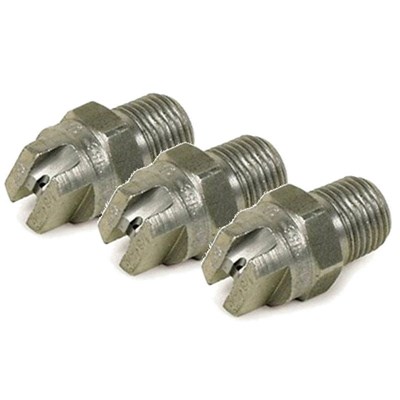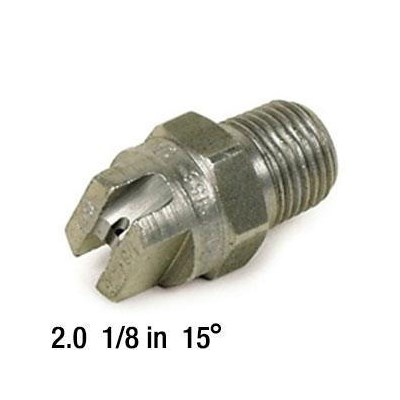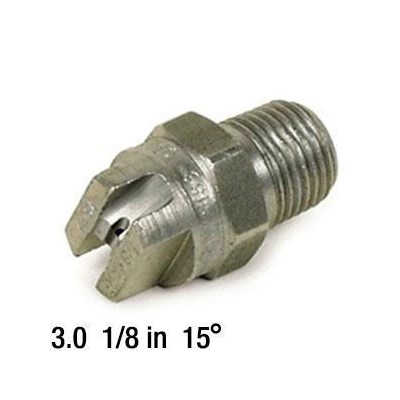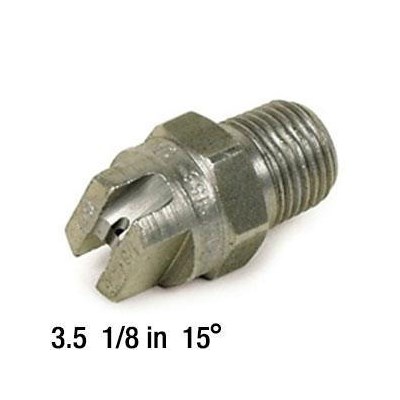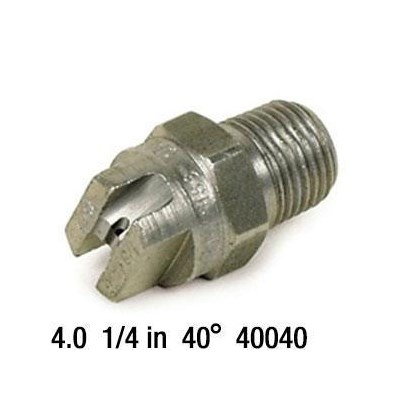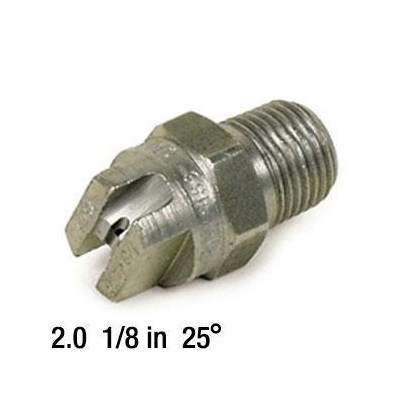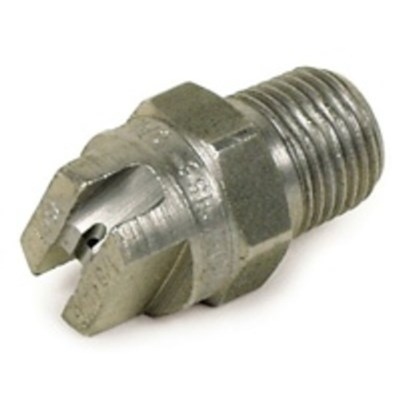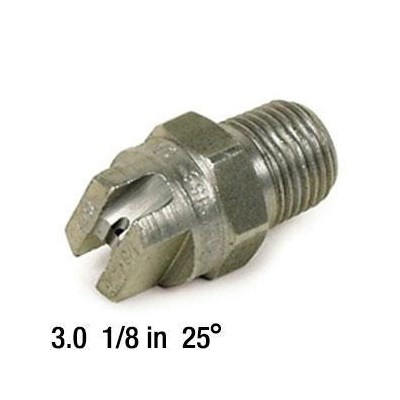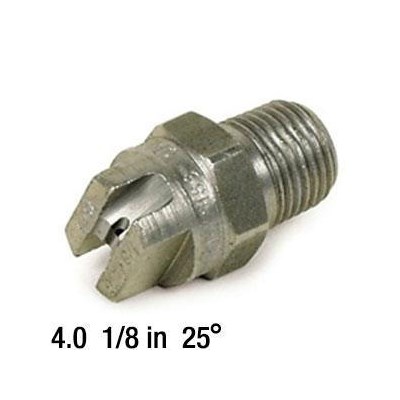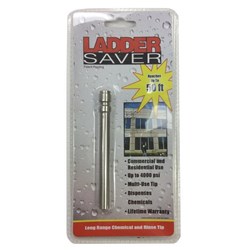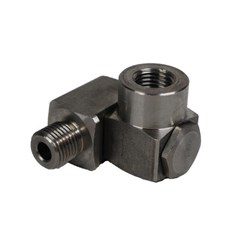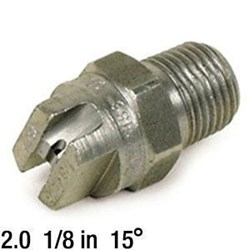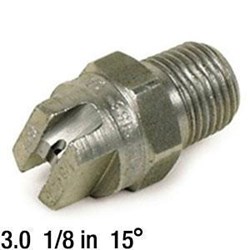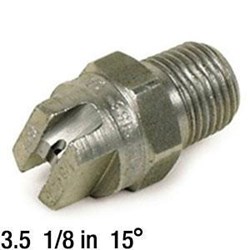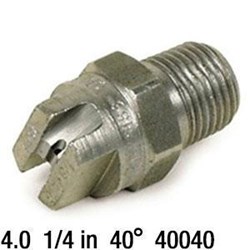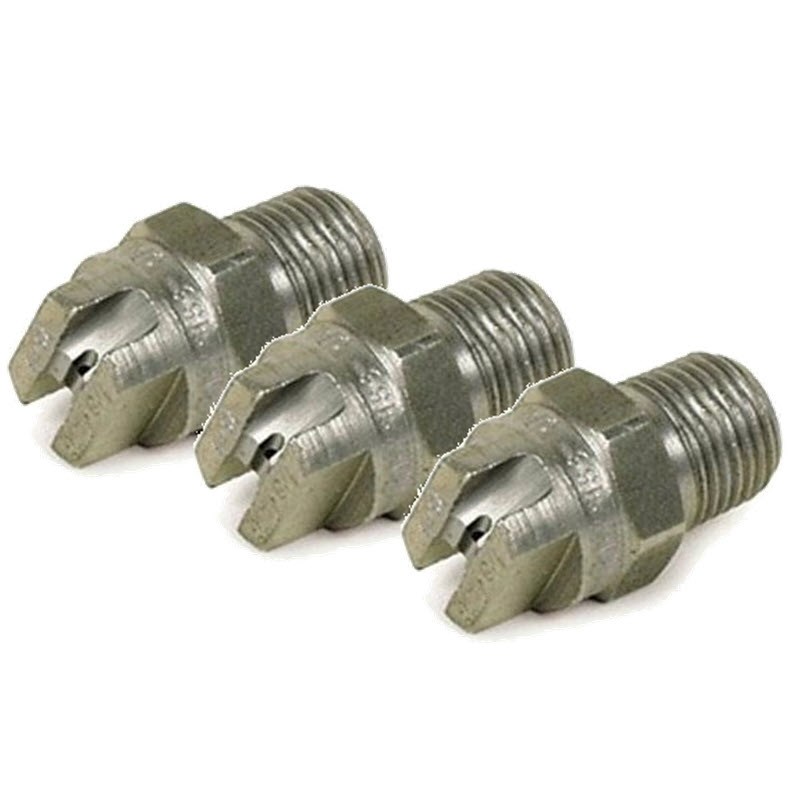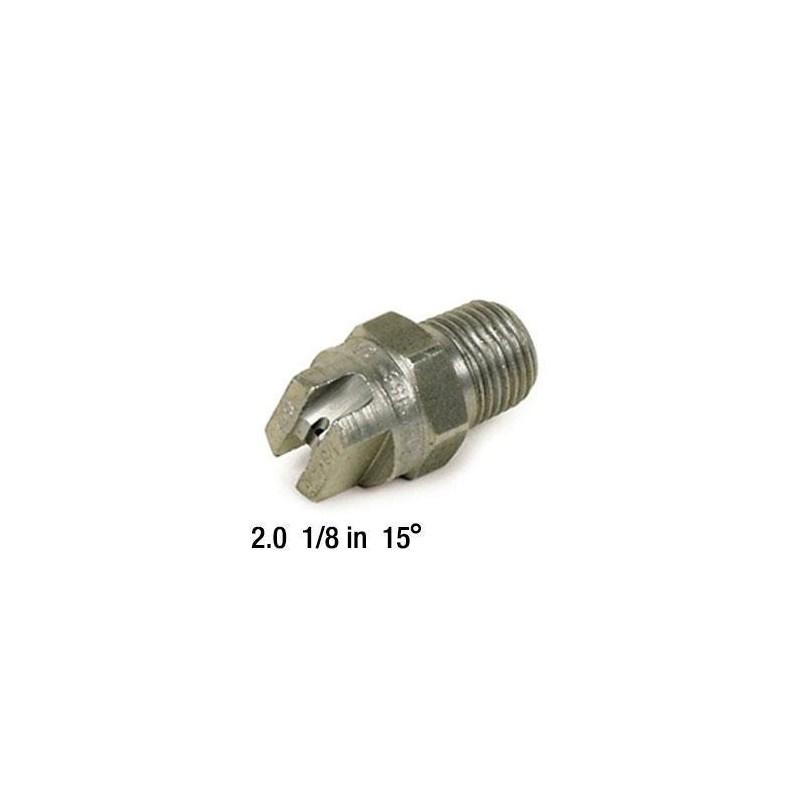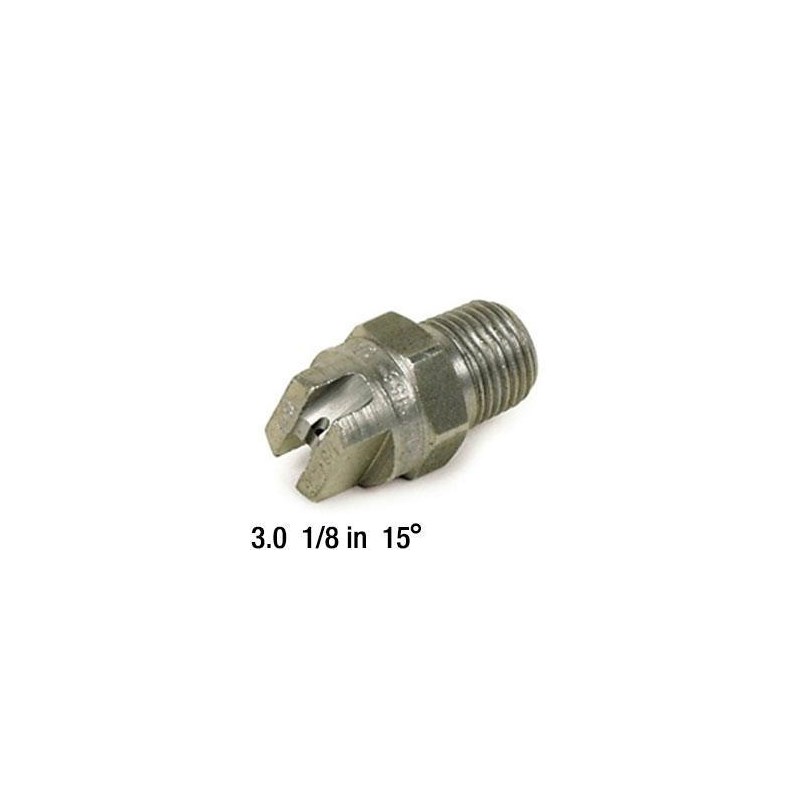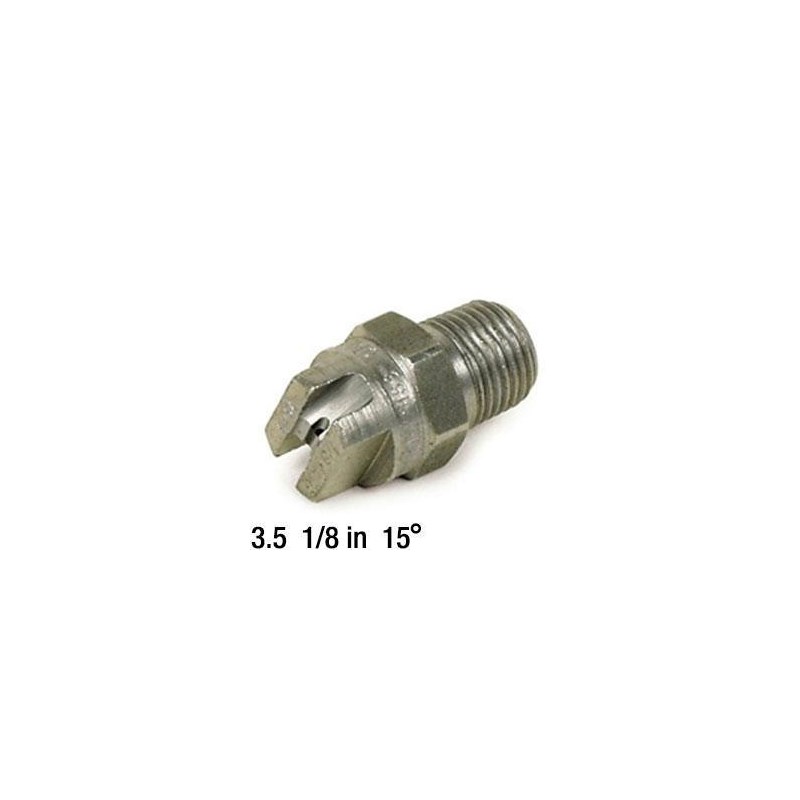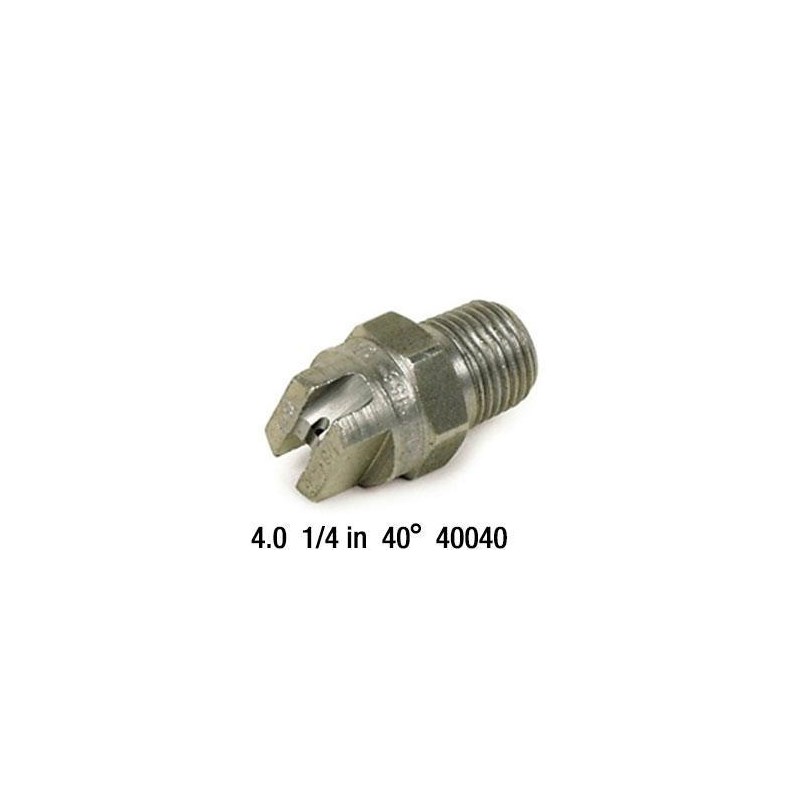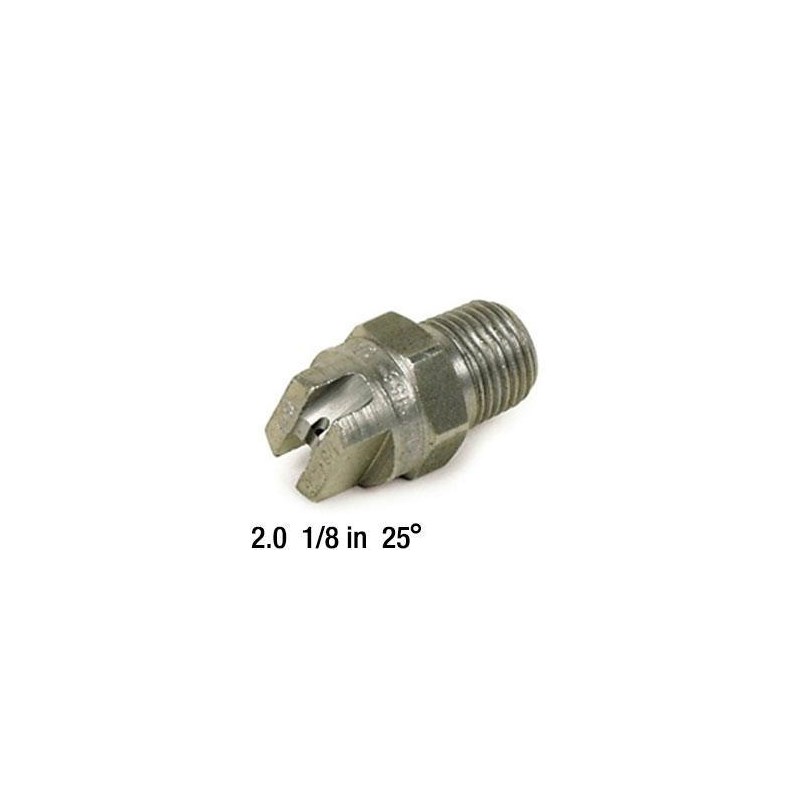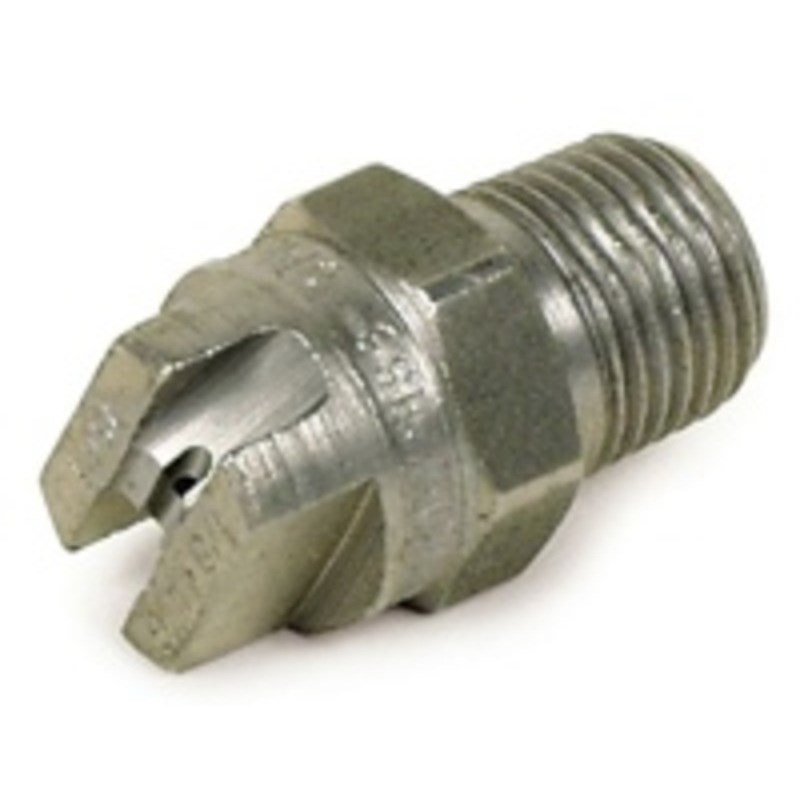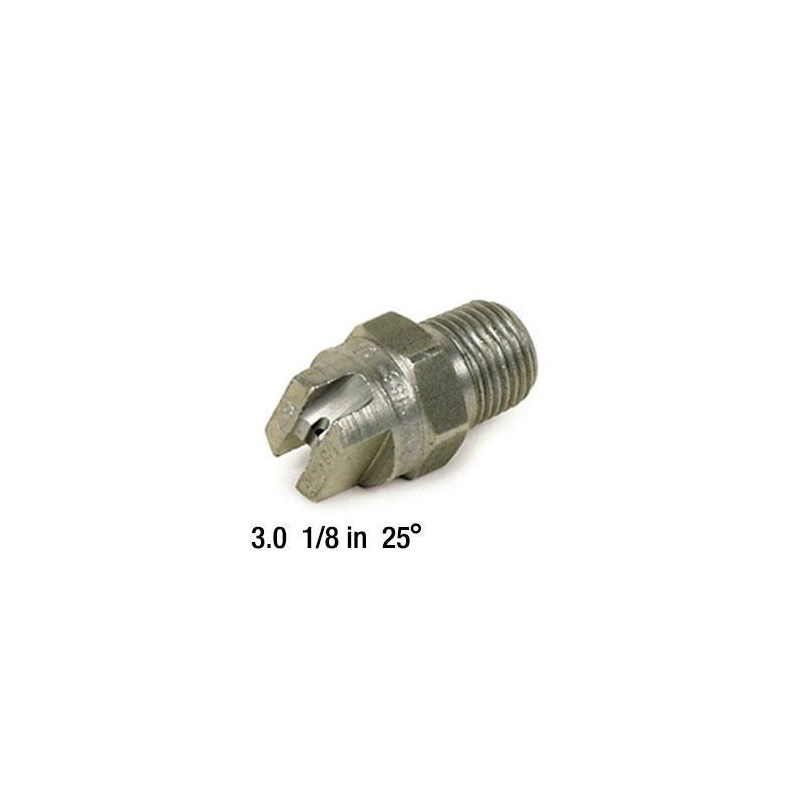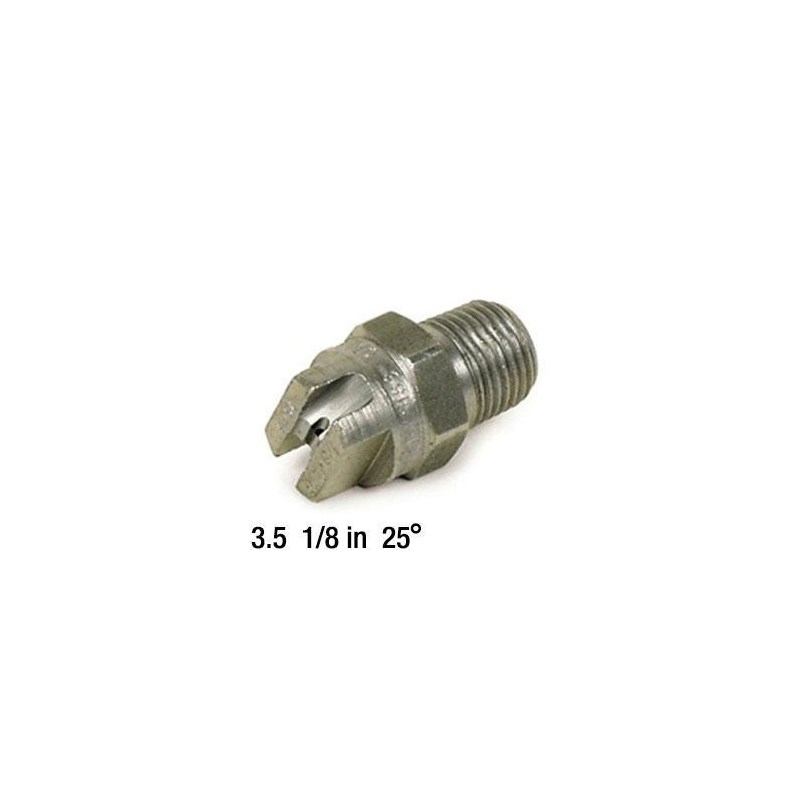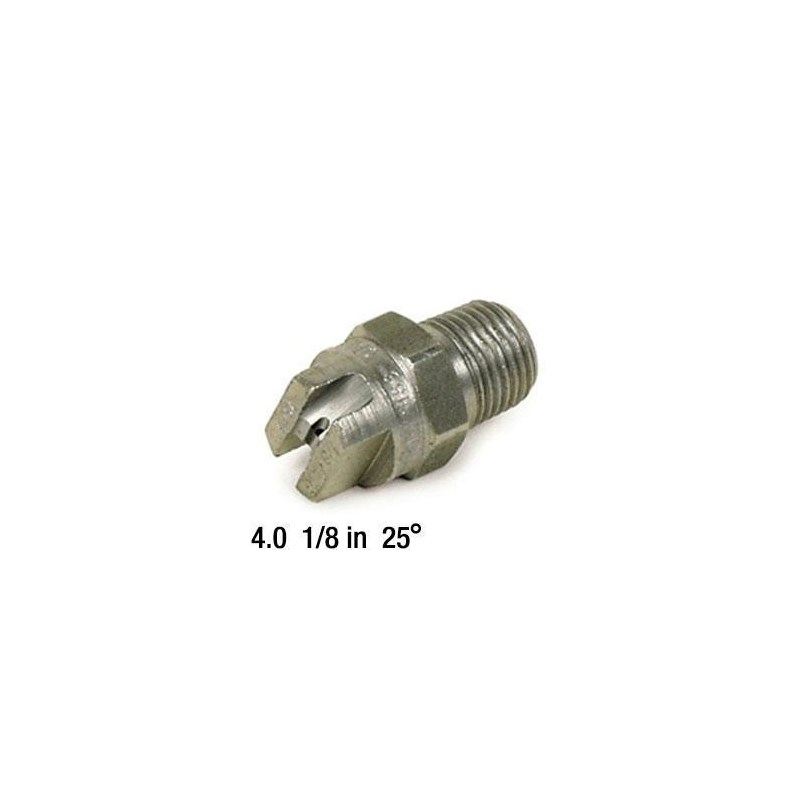Nozzle Stainless Steel 1/8 npt
Quick Overview
- 3.5 Nozzle SS 1/8in 15deg
- Typically used in the end of the rotating bars for pressure washer surface cleaners as shown on the right
- The bars usually have 25 degree tips installed, for stronger, deeper, but slower cleaning 15 degree tips can be used.
Show More
$2.15 - $3.85
Tip Degree / Orifice Size Selection
Stainless Steel Nozzle Tips 1/8in npt
Typically used in the end of the rotating bars for pressure washer surface cleaners as shown on the right
Many Mossmatic surface cleaners use this 1/8 npt fitting size
The bars usually have 25 degree tips installed, for stronger, deeper, but slower cleaning 15 degree tips can be used.
For a two tip Bar, divide your typical tip size used for you wand by two, so for a 4 GPM 4000 pressure washer the tip used is generally a Number 4 install 2 25 degree 2.0 orifice size tips
For a 8 gpm machine at 3500psi the tip for your wand is typically a 7.5 or 8 size consider 3.5 or 4.0 tips is a bar similar as shown

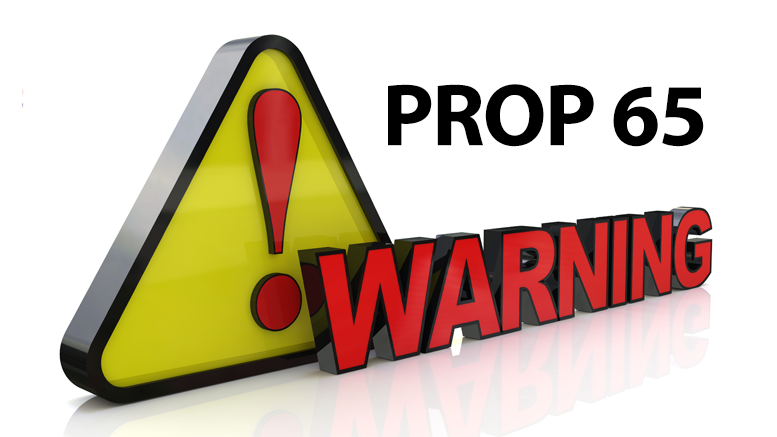
Proposition 65 requires businesses to provide warnings to Californians about significant exposures to chemicals that cause cancer, birth defects or other reproductive harm. These chemicals can be in the products that Californians purchase, in their homes or workplaces, or that are released into the environment. By requiring that this information be provided, Proposition 65 enables Californians to make informed decisions about their exposures to these chemicals. Proposition 65 also prohibits California businesses from knowingly discharging significant amounts of listed chemicals into sources of drinking water. Proposition 65 requires California to publish a list of chemicals known to cause cancer, birth defects or other reproductive harm. This list, which must be updated at least once a year, has grown to include approximately 900 chemicals since it was first published in 1987. Proposition 65 became law in November 1986, when California voters approved it by a 63-37 percent margin. The official name of Proposition 65 is the Safe Drinking Water and Toxic Enforcement Act of 1986.
The list of chemicals contains a wide range of naturally occurring and synthetic chemicals that include additives or ingredients in pesticides, common household products, food, drugs, dyes, or solvents. Listed chemicals may also be used in manufacturing and construction, or they may be byproducts of chemical processes, such as motor vehicle exhaust. For more information visit www.p65warnings.ca.gov/


